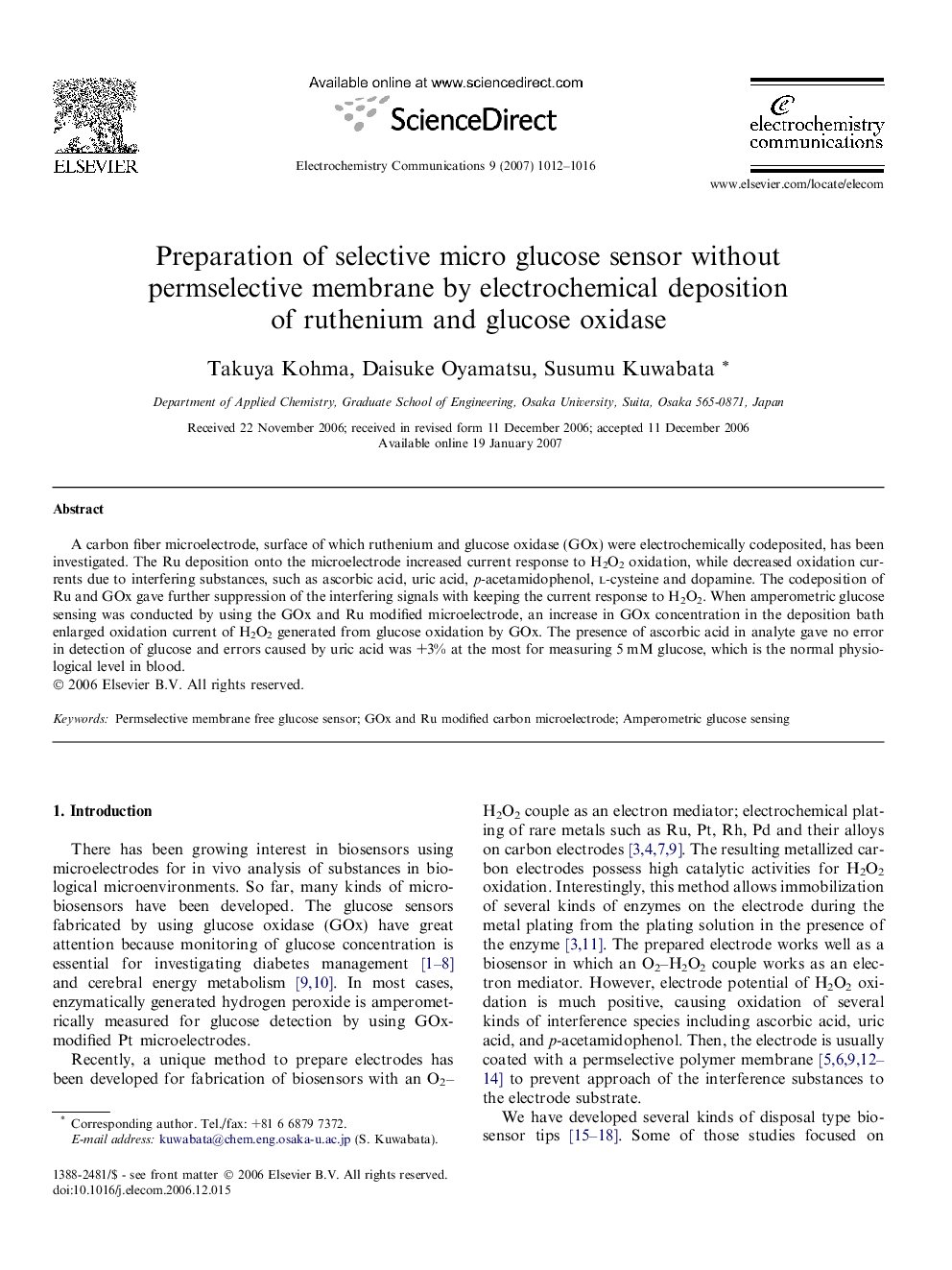| Article ID | Journal | Published Year | Pages | File Type |
|---|---|---|---|---|
| 181882 | Electrochemistry Communications | 2007 | 5 Pages |
A carbon fiber microelectrode, surface of which ruthenium and glucose oxidase (GOx) were electrochemically codeposited, has been investigated. The Ru deposition onto the microelectrode increased current response to H2O2 oxidation, while decreased oxidation currents due to interfering substances, such as ascorbic acid, uric acid, p-acetamidophenol, l-cysteine and dopamine. The codeposition of Ru and GOx gave further suppression of the interfering signals with keeping the current response to H2O2. When amperometric glucose sensing was conducted by using the GOx and Ru modified microelectrode, an increase in GOx concentration in the deposition bath enlarged oxidation current of H2O2 generated from glucose oxidation by GOx. The presence of ascorbic acid in analyte gave no error in detection of glucose and errors caused by uric acid was +3% at the most for measuring 5 mM glucose, which is the normal physiological level in blood.
